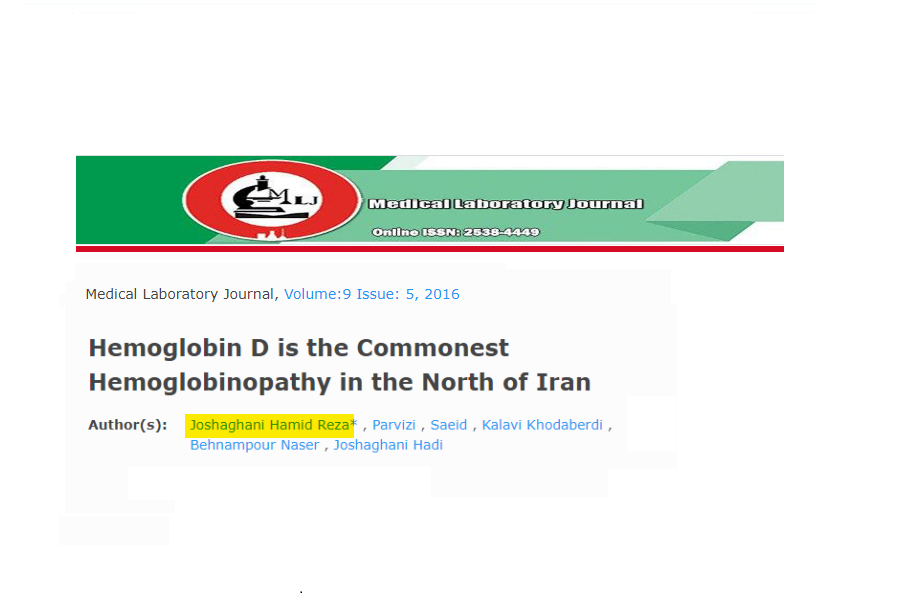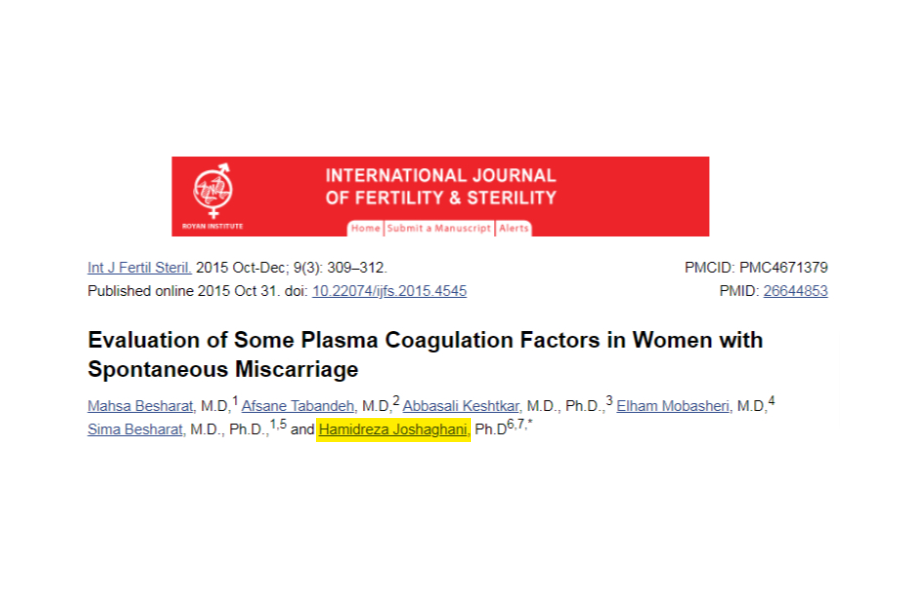هموگلوبین D شایع ترین هموگلوبینوپاتی در شمال ایران است
Abstract
Background and Objective: Normal hemoglobin (Hb) is formed of a heme group and a protein group known as globin. Globin is made of four polypeptide chains and in hemoglobinopathies, the structure of one of these four polypeptide chain becomes abnormal. Cellulose acetate method is a common way to differentiate haemoglobinopathies. Inability to identify the components of Hb low concentrations and incapability to isolate all Hb types are among the disadvantages of this method. The aim of this study was to report the prevalence of hemoglobinopathies in the North of Iran by capillary electrophoresis method.
Methods: All patients with suspected hemoglobinopathies, referred by physicians for electrophoresis, have been studied in a private center in the city of Gorgan, Iran. The level of HbA2, HbA, HbF and other Hb was recorded.
Results: Overall, 725 blood samples were analyzed using the capillary method. HbE was reported in 2 patients, HbH was observed in 2 patients and Hb Barts was reported in 3 patients. Using the capillary method, among patients with the SDG area, only 4 of 38 (10.52%) had HbS and the majority of them (89.48%) had HbD.
Conclusion: HbD is the most common hemoglobinopathy in the North of Iran.




پاسخ دهید
میخواهید به بحث بپیوندید؟مشارکت رایگان.